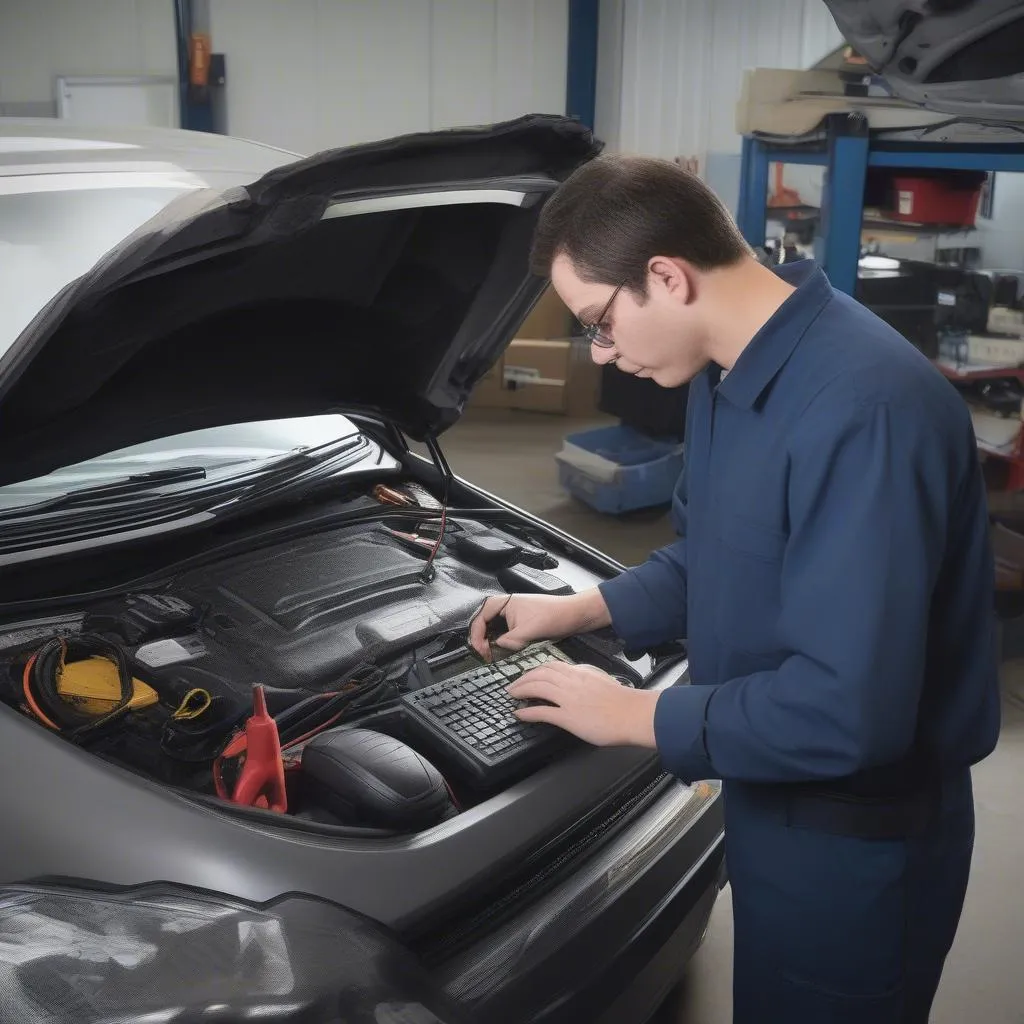Imagine you’re driving down a busy highway, enjoying the open road, when your car suddenly sputters and loses power. You’re stranded, unsure what’s wrong and what to do next. This is a common nightmare for many drivers, and often, the root of the problem lies in the complex network of electronics that power your modern vehicle. This is where vehicle diagnostics come in – a vital tool for understanding and addressing issues that arise with your car’s electrical systems.
Understanding Vehicle Diagnostics: A Deeper Dive
Vehicle diagnostics is a broad term encompassing the process of using specialized tools and techniques to analyze and interpret the various electronic signals within a car. This helps pinpoint problems, allowing mechanics to diagnose and fix them effectively. Think of it like a doctor examining a patient – using different tools to understand what’s ailing them.
The Importance of Vehicle Diagnostics
- From Mechanic to Tech Expert: Vehicle diagnostics have transformed the automotive industry. Mechanics are no longer just “grease monkeys” but tech-savvy professionals who can interpret data streams from various sensors and modules within a vehicle. This shift has empowered mechanics to solve problems faster and more efficiently.
- The Rise of the OBD-II System: The introduction of the OBD-II system (On-Board Diagnostics) in 1996 revolutionized car maintenance. This standardized diagnostic system provides a universal language for communication between vehicles and diagnostic tools. It gives mechanics a unified platform to access critical information about a vehicle’s health, regardless of its make or model.
- Safety and Efficiency: Beyond just troubleshooting, vehicle diagnostics plays a crucial role in improving safety and fuel efficiency. By identifying potential problems early, mechanics can address them before they become major issues, preventing accidents and minimizing downtime. For example, a faulty oxygen sensor can affect fuel consumption, while a faulty brake sensor could potentially lead to accidents.
Decoding the Language of Vehicle Diagnostics:
Vehicle diagnostics primarily involves using diagnostic scan tools, which connect to the vehicle’s diagnostic port. These tools are equipped with specialized software that allows mechanics to interpret error codes, monitor sensor readings, and perform various tests. Let’s explore some common types of scan tools:
- Dealer Scanners: Designed specifically for use by authorized dealerships, these tools are typically brand-specific and offer the most comprehensive access to vehicle data. They can read and clear codes, perform advanced tests, and even reprogram certain vehicle modules.
- Generic Scanners: More affordable and readily available, these scanners can be used on a wider range of vehicles but may not offer the same level of functionality as dealer-specific tools. They are primarily used to read and clear error codes, providing a basic understanding of the vehicle’s health.
- Advanced Scanners: Catering to professional mechanics, these scanners boast a wider range of capabilities, including live data streaming, bi-directional communication, and the ability to perform specialized tests on different vehicle systems.
What to Expect During a Vehicle Diagnostic:
When a mechanic performs a vehicle diagnostic, they typically follow a structured approach:
- Vehicle Inspection: The mechanic begins by examining the vehicle’s overall condition, looking for any visible signs of problems.
- Connection to Scan Tool: The diagnostic scan tool is connected to the vehicle’s OBD-II port, allowing the mechanic to access its electronic systems.
- Retrieving Error Codes: The scan tool retrieves any error codes stored in the vehicle’s computer memory. These codes indicate specific issues that need to be addressed.
- Data Analysis: The mechanic analyzes the error codes and reviews live data streams from various sensors and modules to identify the root cause of the problem.
- Test Procedures: Depending on the issue, the mechanic may perform additional tests to confirm their diagnosis and gather more information.
- Repairs & Recommendations: Once the diagnosis is complete, the mechanic can proceed with repairs, offering recommendations for future maintenance or repairs.
Common Questions About Vehicle Diagnostics:
Q: Can I perform vehicle diagnostics myself?
A: While basic scan tools are available for home use, professional-grade diagnostics require specialized training and knowledge. Unless you have a solid understanding of automotive electronics and diagnostics, it’s best to leave it to the experts.
Q: How often should I have my vehicle diagnosed?
A: It’s generally recommended to have your vehicle diagnosed annually as part of your routine maintenance schedule. This helps catch problems early before they become major issues.
Q: What if my vehicle isn’t covered by a warranty?
A: Even if your car isn’t under warranty, it’s still essential to get regular diagnostics, especially as your vehicle ages. Catching problems early can prevent expensive repairs down the road.
Conclusion
Vehicle diagnostics is an essential aspect of modern car ownership. By understanding the basics of this technology and utilizing professional services when needed, you can keep your vehicle running smoothly and prevent unexpected breakdowns. Remember, the key to a happy and reliable driving experience lies in proactive maintenance and knowing when to seek expert help.
Have any more questions about vehicle diagnostics? Feel free to leave a comment below, and we’ll do our best to answer them. For expert assistance with diagnostics or to discuss your specific vehicle needs, contact us via Whatsapp: +84767531508. We have certified technicians available 24/7 to provide you with the best possible service.



